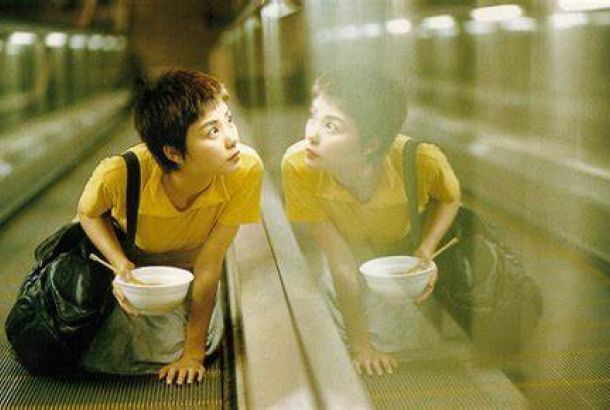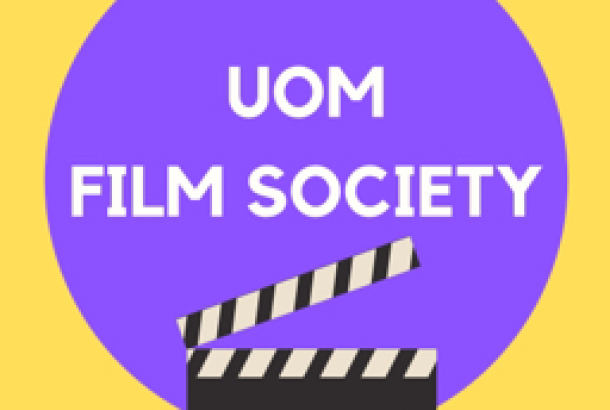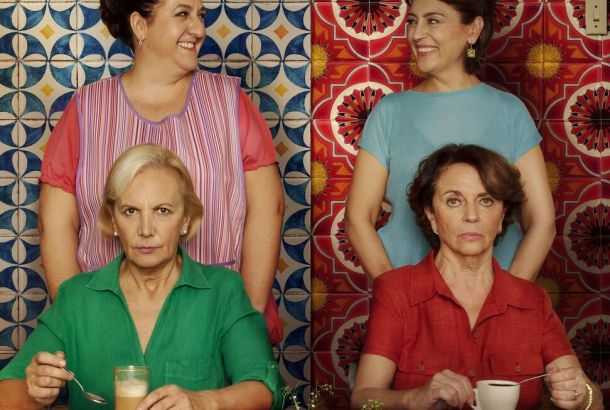Global cinema series: First stop, France
Le Scaphandre et le Papillon (2007): The powers of the human spirit in the eyes of Julian Schnabel’s – Grace Humphreys
Released almost 15 years ago, Le Scaphandre et le Papillon (The Diving-Bell and the Butterfly in English) tells the touching story of Jean-Dominique Bauby (Matheiu Amalric); a man living with “Locked-in syndrome” after suffering a stroke.
The film follows Jean-Dominique, known as Jean-Do, Editor-in-Chief of French Elle, as he suffers a life-altering stroke at 43 which leaves him comatose for 20 days. As he regains consciousness, Jean-Do discovers he has no control over his body, except for blinking his left eyelid.
This neurological disorder is often referred to as “Locked-in syndrome”. Jean-Do compares his condition to that of a “diving bell”; a rigid device used to lower divers to the sea floor, but cannot be controlled by it’s occupants.
Cared for in a hospital in Northern France, Jean-Do is regarded as unresponsive, until a speech therapist derives a simple device that allowed him to communicate with just his left eye. With this he begins to write a book depicting the claustrophobic life he now leads, whilst also reflecting on his life before the stroke.
In his memoir, Jean-Do reflects on how writing helped him to accept his new way of living: “my diving bell becomes less oppressive, and my mind takes flight like a butterfly”. This book went on to sell 25,000 copies on it’s day of release in 1997, becoming a European best-seller.
Opening with fuzzy shots of a hospital room, the audience experiences the confusion and shock with Jean-Do, as the first third of the film is shot in first person. We look through Jean-Do’s eyes as he processes his diagnosis, and its effects on his friends and family. As the film progresses, the field of view widens and we can observe the body Jean-Do is trapped in.
As an artist himself, Director Julian Schnabel paints beautiful memories of Bauby’s life with a level of skill that is truly a tribute to Bauby and his brilliant mind. Schnabel expertly brings life to the mundane, lending us a hand into Jean-Do’s imagination, crafting poignant memories of his past in heart-wrenching detail.
Laced with dry-humour and melancholy portrayals of a lost life, Le Scaphandre et le Papillon is more than deserved of its critical acclaim, receiving Best Director at Cannes film festival in 2007. The film is a must-see, the perfect portrayal of the unyielding human spirit.
Films similar to Le Scaphandre et le Papillon:
Les Intouchables (2011)
Populaire (2012)
At Eternity’s Gate (2018)
C’est Quoi Cette Famille ?! (2016): An insight on the complexities of blended families – Imogen Mingos
C’est quoi cette famille ?! (‘We are Family?!‘ in French) is a 2016 comedy film directed by Gabriel Julien-Laferrière and starring Thierry Neuvic, Julie Gayet, and Lucien Jean-Baptiste. A topical film about a famille recomposée, meaning “blended family” in English, and what happens when the kids have had enough of playing by the parents’ rules.
The movie follows teenager Bastien who has six half-brothers and sisters, eight parents, and a grandmother whom he is constantly having to move between multiple times a week. When the siblings decide they can’t take it anymore, they trick all of the grown-ups so each of them thinks the children are staying with someone else and instead live alone in an abandoned apartment. The children then propose that the adults move between homes rather than themselves.
Despite being a comedy, there are also poignant moments – particularly with regards to the sibling’s sharing conversations or the younger children talking to their parents. Blended families are a huge phenomenon in France with approximately 45% of marriages ending in divorce and one in ten children living in blended families. This movie is light-hearted and doesn’t critique the parents in these families, but it raises awareness of the difficulties that the children can sometimes face in these cases.
However, it also highlights the joy that can come from being in a large family and the lovely moments that can be shared between them. It feels nostalgic, in a sense, for all of the silly times that people share as children, whether that’s with their siblings or members of their extended families.
Overall, this film is less well known than say Les Intouchables or Amélie but it is certainly a good watch that supplies the ups and the downs: both the laughs and the emotional punches. I would recommend it to anyone but particularly to people looking for a funny, easy-going film that they haven’t seen before.
Films similar to C’est quoi cette famille ?!:
Il a déjà tes yeux (2016)
C’est quoi cette mamie ?! (2019)
Petite Maman (2021)
La Haine (1995): Criminology in film – Ibiwunmi Balogun
La Haine (1995), translated as “the hate” from French and directed by Mathieur Kassovitz, is proof that film is incredibly powerful. This film is arguably one of the most influential films to come out in the 90s in France. Even the French prime minister at the time, Alain Juppé, was moved to the point of dedicating a special screening for his cabinet despite the negative, yet arguably accurate, representations of the police and ultimately the government and its policies.
Saïd, Vinz, and Hubert are three young men from the outskirts of Paris, known as “banlieues” by the French, are at the centre of this film. La Haine depicts the unfolding of 24 hours in the lives of French working class youth in the 90s. Contextually, a local named Abdel has been gravely injured while in police custody which is engendering unrest in the nearby areas as protests and riots emerge in response. La Haine, inspired by the real life case of Makomé M’Bowolé and the case of Malik Oussekine that both consisted of death in custody of minority youths that rattled the French nation in the 80s and 90s.
Within criminology, and specifically policing and politics studies, it is argued that effective policing is defined by the public’s consent to said policing. Protests are a primary example of the public withdrawing this consent and in La Haine, like in the countless real life cases of police killings around the world, local communities stand against the violence and brutality inflicted on them by those supposedly protecting them. This film sheds light on these dangerous contradictions within the French justice system.
Social inequalities are also highlighted in the film with constant visual contrasts between the city of Paris and its outskirts. These same inequalities have the power to potentially lead some down the path of crime for basic survival.
Kassovitz demonstrates this phenomenon, similar to Merton’s strain theory, with Hubert’s character as he deals to provide for his family. La Haine effectively portrays the double standards of societal views around crime and deviance and how certain behaviours are overlooked for some and dangerously punished in others.
The rawness of Kassovitz’s film almost feels like a stylistic documentary due to the indirectly true stories being told and the impressive and captivating cinematography used. Director of Photography, Pierre Aïm, most likely inspired by Russian filmmaking techniques, captures the film in a black and white filter that is so beautifully contrasted that it adds more dimension to the images and pulls viewers into the scenes. This filter is also heavily associated with street photography which further adds to the realism of the film.
While it is visually pleasing to watch and captivating at times, Kassovitz uses the opportunity to educate France about the way the police are sometimes given the right to treat certain civilians poorly simply because of their socio-economic backgrounds and marginalised identities. My research within criminology makes me very critical of on-screen representations of crimes of the powerless and La Haine truly captures the nuanced topics related to cultural hegemony and delinquency.
The characters in La Haine, portrayed impressively and effectively by all the actors, have specific roles that greatly affected the rising and calming tensions throughout. The devastating destructions and limitations that come with capitalism, are gravely affecting each of the main characters, both dividing them yet connecting them. The weapon that is poverty is trapping Saïd, Vinz, and Hubert in a cycle where those affected by it have no choice but to fight, flee or surrender to it.
These sociological themes are also reflected in the environment from the architecturally brutalist buildings to the graffiti art decorating its walls. Similar to Spike Lee’s Do The Right Thing (1989) the graffiti is telling a story of its own, a story of dreams and contrasting realities.
While we know La Haine is not going to end well because of how situations like these play out in the real world, there is still somehow a sense of hope amidst the constant unease. The Director sprinkles in some humanity in the chaos, as the characters are seen using their artistic expressions to envelop their surroundings despite the desolation and underfunding of said surroundings.
I recommend this film to those who dedicate their time to being socially aware, to those who have no choice but to be socially aware and to those who don’t know where to start. I beg those who decide to watch this film to also understand that this is not simply a story but the reality of many youths around the world.
Films similar to La Haine:
Do The Right Thing (1989)
13th (2016)
Sorry To Bother You (2018)
(La Haine trigger warnings: police brutality & violence)







